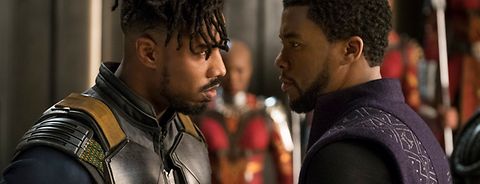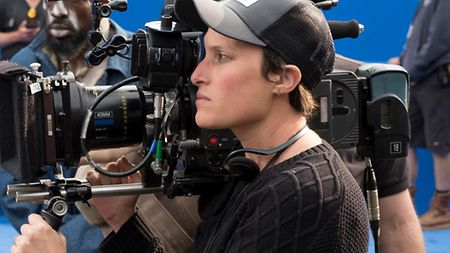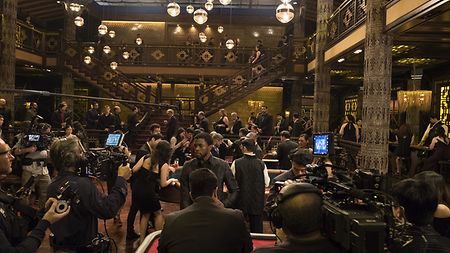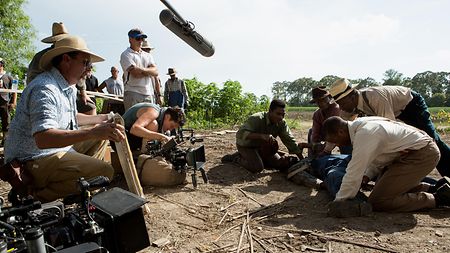"Mudbound" is a complex story about racism and violence in the Jim Crow South and PTSD suffered by World War II soldiers. Jason Mitchell plays Ronsell, a black soldier who returns to Mississippi. During the war in Europe, he experienced honor and respect, back at home he is seen him as a second-class citizen. "I was really interested in `Mudbound` because that’s the photography that inspired me in the first place," says Morrison, who lists Depression-era Farm Security photographers such as Gordon Parks, Dorothea Lange, Walker Evans, Ben Shan, and Arthur Rothstein. “`Mudbound` was a chance to honor them," she says. "Visually, it’s really every cinematographer’s dream – and it was certainly my dream, and one of the first true period films I’ve shot."
She was also inspired by documentaries by Les Blank and his "beautiful, muted color palette," she describes. "It almost feels like you just plopped the camera down and let life unfold, so that was a little bit of an inspiration as well." Morrison credits production designer David Bomba with creating the evocative world of the movie, while shooting at real locations from the era of the story. Morrison also told the story with lighting, since poor people didn’t have electric power and used candles and lanterns.
The movie was shot with ARRI ALEXA Minis, although Morrison initially considered 35mm film. "It wasn’t a big enough difference to justify the cost," says Morrison, who found the Mini was useful when shooting inside "tiny plantation homes where every inch counted." When she was in pre-production, the Mini came out with the 4:3 sensor de-squeeze mode for anamorphic and frame rates of 0.75-200 fps, as well as the Open Gate upgrade. "We largely shot anamorphic with a little bit of spherical, and [with the upgrade], the Mini was the perfect tool."



